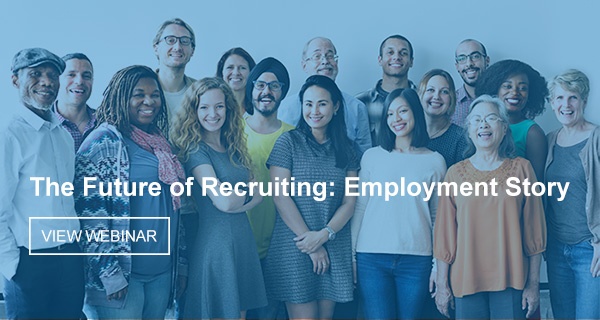As competition for top talent becomes increasingly fierce, why is it that some companies like Google, Shopify, and Netflix don’t have much difficulty filling their candidate pipeline? Joel Capperella, founder of Capperella Strategies, LLC, a content marketing consultancy based in Pennsylvania, argues that companies’ future success in attracting top talent lays in their ability to communicate their employment story, or what it’s like to work for the company. In his recent RPOA webinar “The Employment Story: The future of recruiting and employer brand,” Capperella shares some of the biggest dos and don’ts for building an enticing employment story.

Do communicate what it’s like to work for your company.
Gary Vaynerchuck, the founder of advertising firm VaynerMedia, knows how to really communicate their employment story. He and his brother have built a top-of-the-line digital agency (with clients like GE and the NHL) based of their ability to communicate brand value. He applies his communication expertise to his company’s employer brand, using his YouTube series, DailyVee, to show what it’s like to work at VaynerMedia.
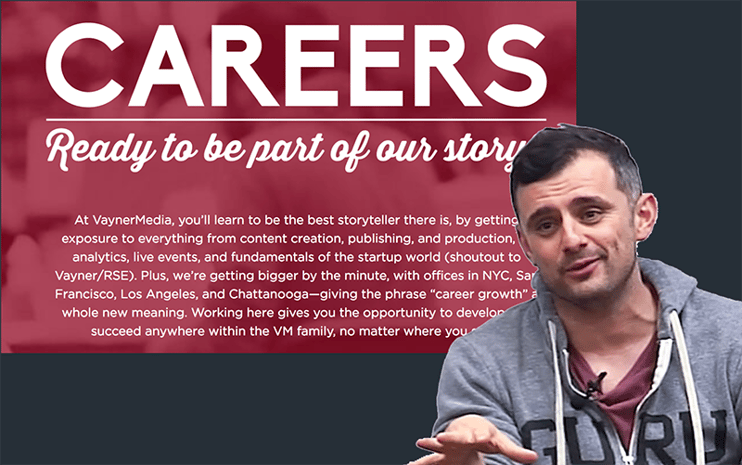
Vaynerchuck uses DailyVee to build VaynerMedia’s brand by showcasing the talents of his employees and giving an insider view of the company’s culture and daily life. The videos are shot and edited by VaynerMedia's employees. Furthermore, Vaynerchuck credits the videographer by name and shares his social media handle at the end of each episode, promoting his work to tens of thousands of viewers.
Capperella sites an example where Vaynerchuck dedicated a full episode of DailyVee to an interview with the newly hired Chief Heart Officer, Claude Silver. The interview with the chief “people person” of VaynerMedia makes it very clear what it’s like to work for the agency. The combination of having the Chief Heart Officer and taking a DailyVee episode away from Vaynerchuck to focus on the person in charge of VaynerMedia’s culture is a way for the company to communicate how seriously VaynerMedia takes its culture and employee relationship.
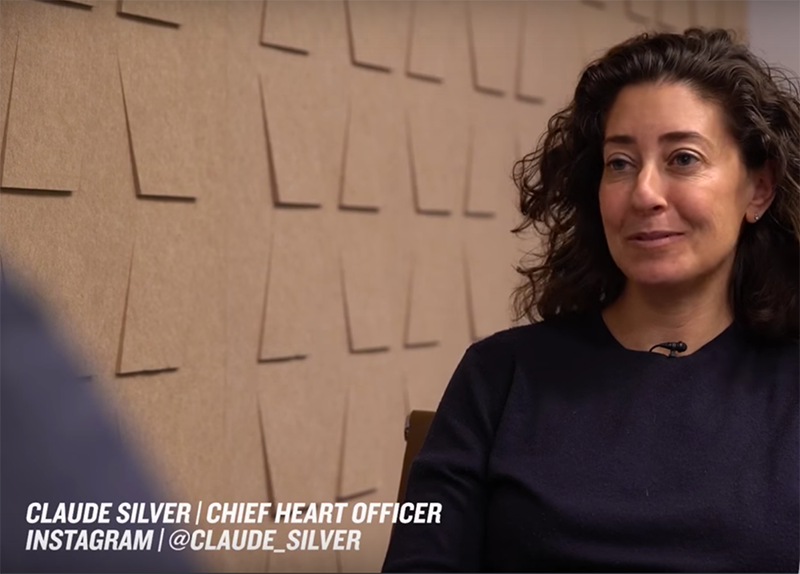
Don’t make the job about you.
This is one of the most common mistakes companies, large and small, make with their job description. They focus on the company and what they’re looking for, and not on the candidate and why she should consider this position. International retail giant, Under Armour, makes the same mistake.
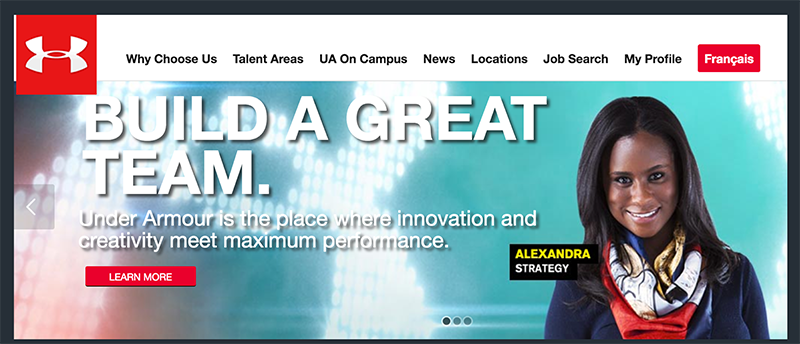
The Under Armour job description starts with a description of the company, and Capperella says that is their first mistake. “They need to start talking about their talent, and the talent community," Capperella explains, "and who I am as a potential member of the company's workforce."
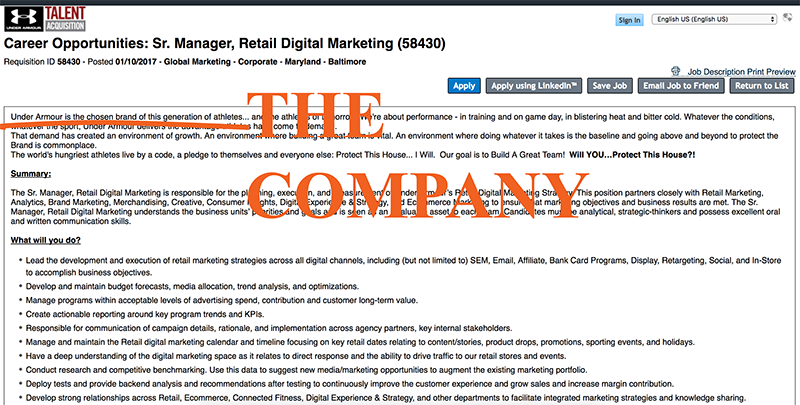
He also points out that the job summary has “a lot of company language…and that it's sterile.” The sterility extends to the qualifications section, as Capperella says, “you can certainly understand what the requirements are, but it’s not a very intimate, engaging or capturing approach to communicating with the people I hope to entice into my organization.” Terms like “create actionable reporting” and “deploy tests and provide backend analysis” may describe job duties, but they aren’t necessarily the terms candidates would use to describe the same activities.
Get your job posting assessed by Joel Capperella. Request your job story evaluation.
Do speak your candidate’s language.
Understand who your audience is and communicate at their level. Are you recruiting white-collar senior executives with more formal communication style and a high-purpose driven attitude? Or are you recruiting younger, go-getter sales executives with high energy and eagerness to bring it on? Your job description should have language that is more relevant to your ideal candidate than to your company.
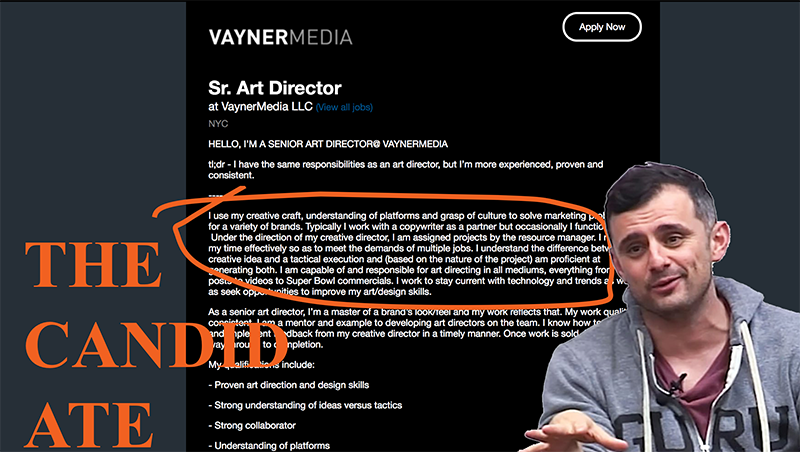
In the above example, VaynerMedia's job description doesn’t talk about the company – rather, it focuses immediately on the candidate, opening with “I’m a Senior Art Director.” Immediately, the reader can connect and identify with the job description in a way that they can’t with the Under Armour posting.
VaynerMedia also uses language to identify itself as geared toward a younger, internet-savvy crowd with the use of the internet acronym “tl;dr” (short for "too long; didn’t read") instead of the more staid and usual “Summary.” Capperella emphasizes that the entire posting is laid out in the candidate’s language, shying away from company jargon in the qualifications section in favor of simpler statements like “Strong collaborator” and “Proven art direction and design skills.”
Don’t make it hard for candidates to apply for a job.
Most career sites require applicants to create an account with an email and password before they can apply for a job. Capperella argues “there is absolutely no reason to require a password to your job site.” Not only is this an extra step, Capperella explains, but it requires candidates to either remember their password or create a new account if they want to apply to another position and can’t remember their password.
Barriers to entry like that makes the candidate experience unfavorable and filters out top candidates who might not tolerate the inconvenience. “The only people who will push through that painful process to require a password to create an account for your career site,” Capperella says, “are those desperate enough to do so.”
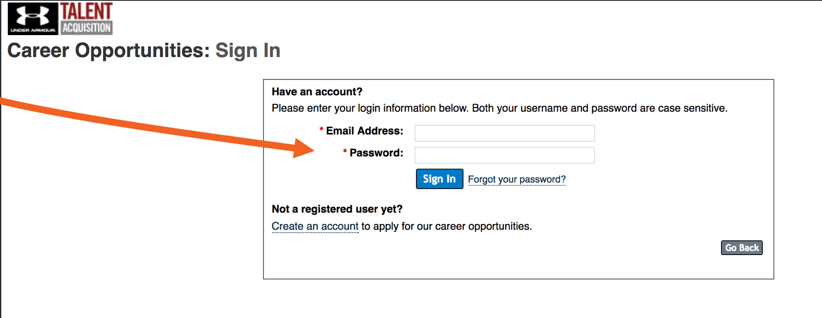
Capperella challenges employers to fill out a job posting for their company themselves to assess the candidate experience. Another suggestion to improve the application process is to ask for a LinkedIn profile in the application then automatically pull the information instead of asking the applicant to re-enter all their details.
Building employer brand by sharing your employment story is an incredible opportunity to attract and engage talent- but it’s not easy. As Capperella says, “it requires commitment, it requires effort, it requires people pulling it off and knowing what you’re going to say.” The biggest challenge, according to Capperella, is that building your employment brand requires change. Communicating what it’s like to work for your company, keeping up with social media, and making it easier for candidates requires a lot of changes. Changes in your application process, your marketing strategy and your communications. You can choose to act now and get ahead of your competition in winning top talent, or you can choose to do nothing and watch candidates driven to other companies that took the time and effort to tell their employment story.
For more information on the employment story from Joel Capperella, view his energetic and passionate webinar here.


